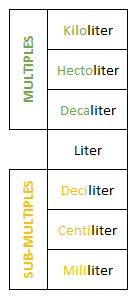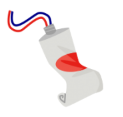Welcome to the Smartick blog! This week we are going to look at a concept which we haven’t talked about in the blog yet: measurements of capacity.
Capacity
Measures the quantity of liquid that an object holds. For example, the capacity of a bottle is the quantity of liquid with which we can fill it. Another word for capacity is volume. Let’s say that capacity is the volume that a body occupies in space.
The principal unit for measuring the capacity of an object is the liter. But it is not the only one that we have. There are multiples, which are the units for specific capacities bigger than the liter and there are sub-multiples, which are the units for specific capacities which are smaller.
We can see the units of capacity in the following table:

There are more measurements of capacity but these are the most common:
- Kiloliter
- Hectoliter
- Decaliter
- Liter
- Deciliter
- Centiliter
- Milliliter
I’ll show you more examples of measurements of capacity:

An Olympic-size pool is about 2500 kiloliters.

A bathtub is about 2 hectoliters.

A barrel is about 2 hectoliters.

A bottle has the capacity of approximately 1 liter.

A tube of toothpaste is approximately 1 deciliter.

A spoon is approximately 1 centiliter
I hope that you liked this week’s post about measurements of capacity. If so, don’t hesitate sharing it with your classmates and friends so that they can learn, too.
Until next week, keep learning elementary math with Smartick!
Learn More:
- Learn about the Metric System and Measurements of Volume and Mass
- Review of All Units of Measurements
- Learn More about Measurements of Length
- Practicing with Units of Measurement in the Metric System
- Learn How to Convert Mass Measures in the Metric System
- The Language of Functions and Graphs - 07/01/2024
- Educational Technology: The Christodoulou Test - 05/06/2024
- Multiplication Activities in Smartick - 04/09/2024








Good
🥰😍😇
amazing
Wonderful
Thanks for the notes